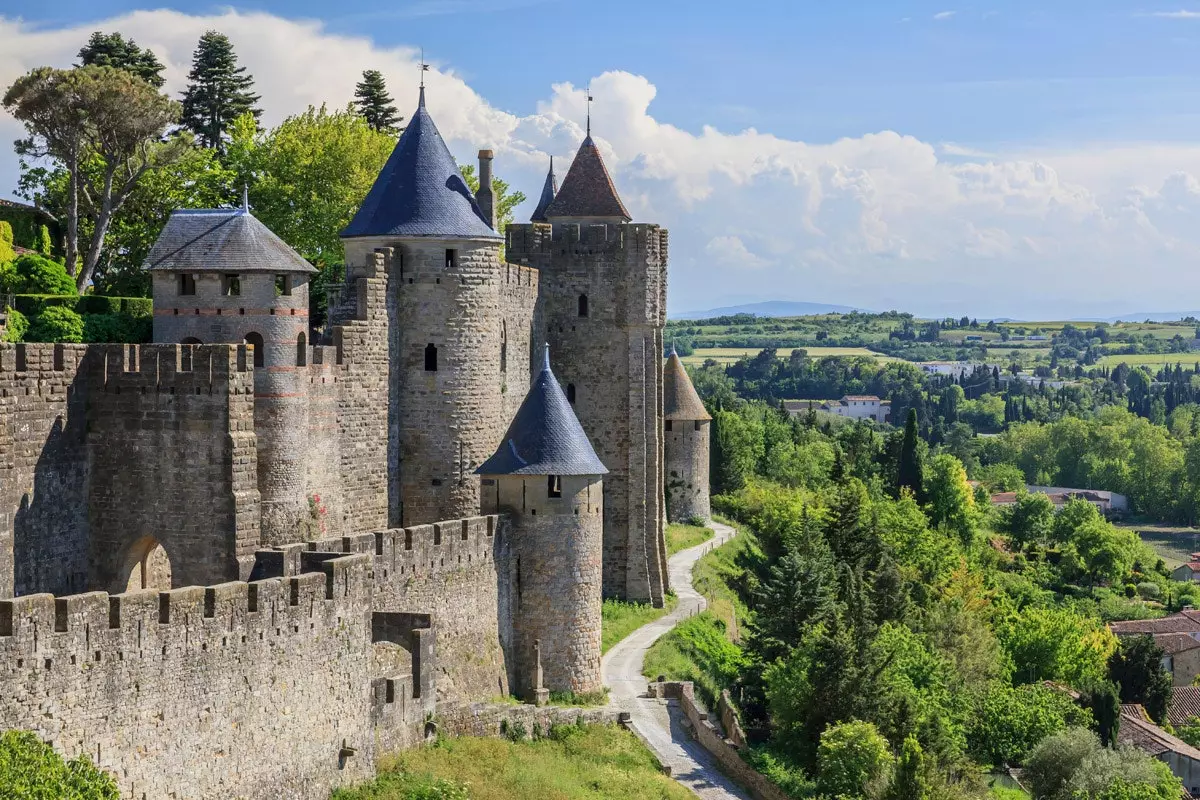
Carcassonne guide: always a must go; you always have to come back
Carcassonne would have to be reached on horseback. Aboard a palfrey, wearing mail, a helmet in the shape of some ferocious animal and maroon breeches, on the trail of the outlaws who kidnapped the daughter of a wealthy knight who has offered several hundred gold deer for her ransom. That's ideal, but I think it would be quite complicated these days to find a guy like that on the outskirts of any European town. So The most evocative way to reach Europe's largest surviving fortified medieval city is by train. The Renfe SNCF train takes just over two hours from Barcelona and about five from Madrid. A walk that, in this case, immerses us in history.
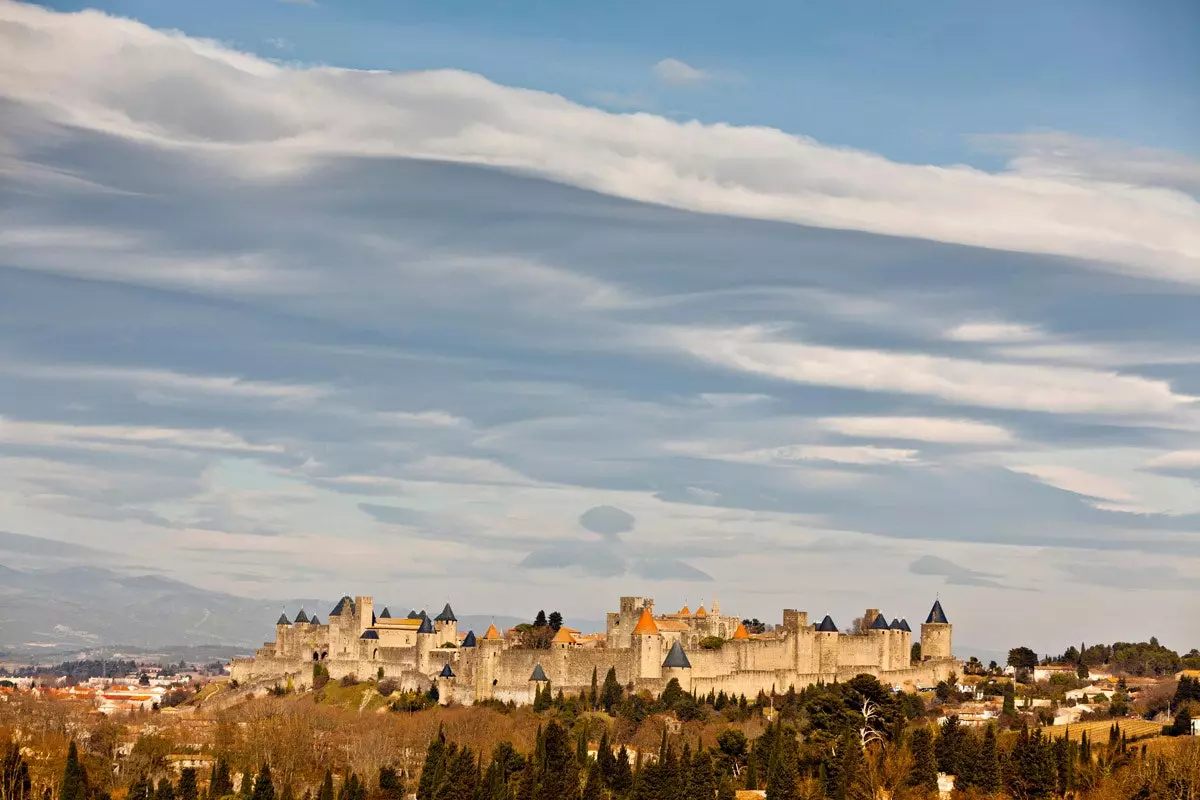
walking through history
And it is that this city, located on a hill of the French region of Languedoc-Roussillon, It evokes better than any other images of dragons, swords and medieval duels at sunset. Emerged from a settlement in the 6th century BC, everyone who has passed through has left their mark here: Romans, Visigoths, Saracens and Counts of Toulouse and France. Each one put his trowel of mortar so that Carcassonne exercises today a brutal power of seduction for the tourist through its majestic and abundant towers, turrets and its chilling walls.
If these arguments have not convinced you enough, a quick look at the recent filmography will dispel any doubts. Carcassonne has served as the setting for the Robin of the Woods brought to life by Kevin Costner, the ramblings of D'Artagnan directed by Peter Hyams or the historical paranoia of Jean Reno in The Visitors. It also appears in the pages of The Labyrinth, written by Kate Mosse. Without even having set foot in the lavender fields that surround it, just naming these four stories will make the most skeptical traveler imagine what he can find if he enters its narrow and old streets.
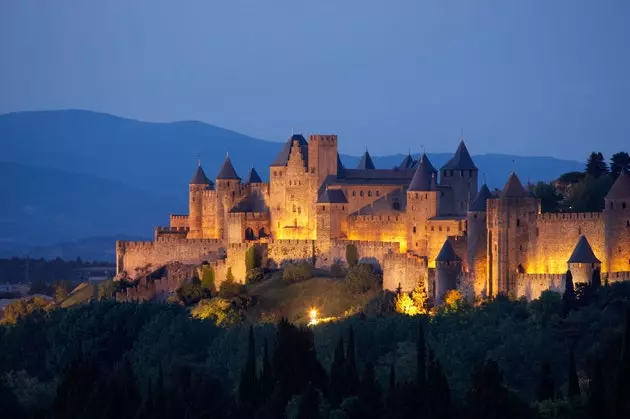
Just the sight of it takes your breath away
The first sight of its fairytale fortress, La Cité, is breathtaking. In total, 52 towers and three kilometers of wall that make up the profile of one of the most attractive places with the most visitors in Europe. Three million people walk its cobblestone every year , an exaggeratedly large number that, we are not going to deceive ourselves, hinders the visit and the traveler's capacity for dreaming, the need that is felt in a place like this to sit and imagine stories of knights-errant, evil witches, smelly cells and rich palaces. Most only spend a few hours here, mostly on the busy main street lined with souvenir shops. In May or September, without the heat and the crowds, La Cité is a much more engaging experience.
To breathe all the essence you have to 'attack' the city in the early hours of the day. Go out into the street to coincide with the awakening of the sun and the reddish tones that fill corners that until then were in shadow. Stepping on ground when the gaze of the 13th century gargoyles of the Saint-Nazaire basilica , which dominates the southern edge of the fortress, still do not seem so sinister and extraordinarily alive. start the tour when the castle, the last defense within the fortress built in the 12th century , it begins to take volume.
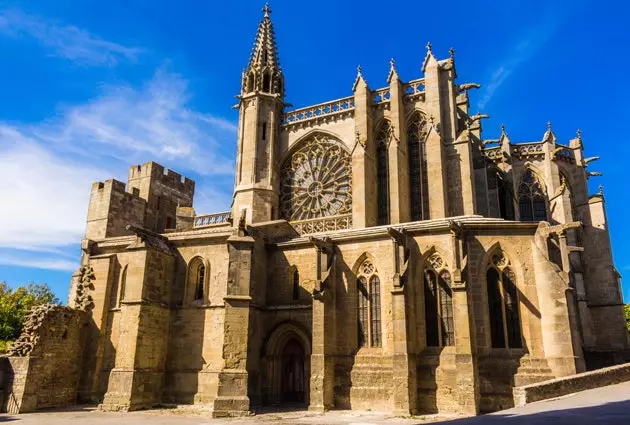
Saint Nazaire, enjoy it first thing in the morning
If the different civilizations gave Carcassonne the image that can be admired today and built the monuments that enrich it from the inside, the work of Eugène Viollet-le-Duc, one of the creators of the modern art of conservation and rehabilitation of monuments and works of art. He was the main restorer of Carcassonne and he did it from the theory that the important thing was not to recover but, rather, to improve the original state of the buildings.
To do this, he did not hesitate to invent creative solutions to historical, structural or construction element problems. La Cité may look more like a Loire Valley castle than a medieval one , but to Viollet-le-Duc we owe the credit that, at least, it exists. His most emblematic work still greets us today from the hill and every night, before enveloping himself in darkness, he thanks this 'revisionist' for deciding to change his studies in Fine Arts for trips to France and Italy as a method of learning .
Carcassonne played a very important role in defending Cathar values and all those who embraced that religion until it fell to the Catholic Crusaders in 1209. The Cathars attacked the Catholic 'establishment' for corruption and other forms of immorality. Evidently, they quickly angered the Vatican and Pope Innocent III mounted a crusade against what he considered heresy and that had its greatest exponent in this French region. In 1209, the crusades besieged Carcassonne until the fortress's leader, Viscount Raymond-Roger Trencavel, surrendered within weeks.
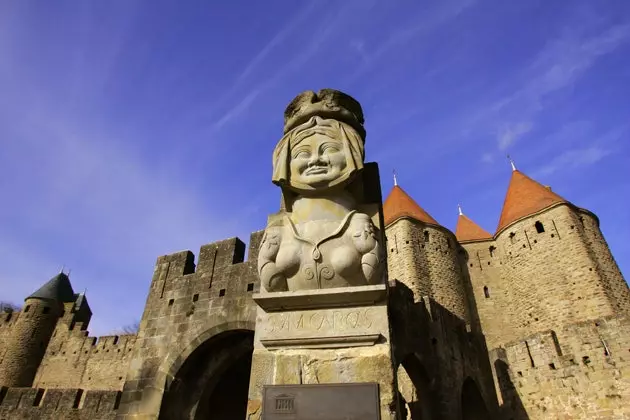
The Lady who was smarter than Charlemagne
A monastic account written in 1218 described what would prove to be a turning point in the history of La Cité: "The Crusaders allowed all the inhabitants to be free, so long as they left the city bare. In this way all their booty could be preserved." for the new viscount. So it was done. All the inhabitants left the city carrying nothing but their sins." La Cité did not suffer the fate of other nearby towns and did not succumb to devastation, but rather to depopulation, thus preserving its historical legacy. It's not hard to find people here willing to argue that the Cathars were unjustly crushed, that they were innocent victims rather than diabolical heretics.
That is the historical part, but Carcassonne, like any fairytale city, also has its legend. The one that narrates how after five years of Charlemagne's siege on a Carcassonne ruled by Muslims, inside the fortress you begin to succumb to hunger. Lady Carcás, which was the name of the king's wife, places straw dolls on the walls so that the attackers believe that the defense is still numerous. Although the reality is quite different: its inhabitants only have a pig and a sack of wheat left for food.
Then Lady Carcás decides to fatten the last pig with the wheat they had left and throw it from the top of the wall. The pig breaks to pieces as it hits the ground, and a large amount of grain gushes out of its shattered belly. Faced with such a spectacle, Charlemagne decides to lift the siege thinking that Carcás had so much wheat that they even fed it to the pigs. The bells of the fortress resounded. Legend has it that at that moment one of Charlemagne's vassals shouted "Sire, Carcas sonne!" ("Lord, Carcas plays!")
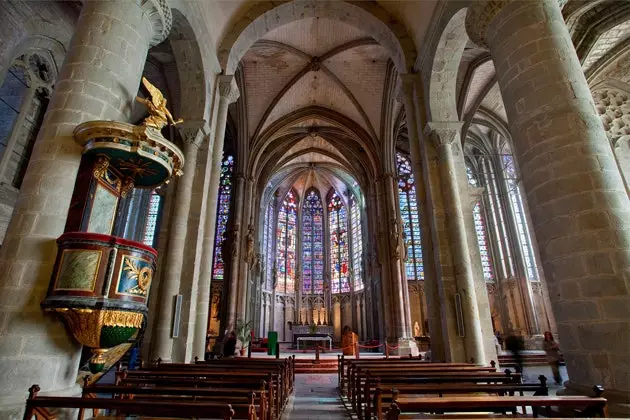
Elegance made architecture
Once the legend and history are known, you have to enter the Castle of the Count. There is nothing comparable to this site to explain not only the techniques of siege and defense of a fortified city, but also the incredibly romantic lives of the troubadours, the wealth of the viscounts of Carcassonne and the most glorious and darkest moments in the city's history. The price of the visit is €9, although every first Sunday of the month between November and March, access to the castle and its walls is free.
The other monument to take into account is the Basilica of Saint Nazaire . Already in the sixth century there was a church on the site occupied by the current building, although l he oldest remains - a splendid Romanesque nave - date back to the 12th century. With Carcassonne under the control of the French monarchy, in the 13th century the temple was largely rebuilt to suit the prevailing Gothic fashion. The graceful narrow columns surrounding the apse and transept make the church appear even taller than it is , while its magnificent north and south windows, dating from the 13th and 14th centuries respectively, cast beautiful light at sunrise and sunset.
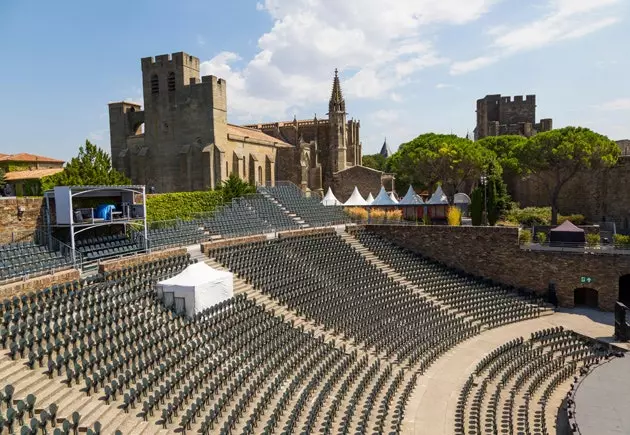
In July and August, it becomes the epicenter of the city's cultural life
Strolling through the narrow streets of the city offers some surprises. Behind Saint-Nazaire appears a Greek-style amphitheater offering a full lineup of music concerts in July, followed by a medieval show in August . Nearby, at 3 Rue du Plo, is the charming little Musée de l'Ecole , housed in a former primary school that shows what French classrooms were like 70 or 80 years ago.
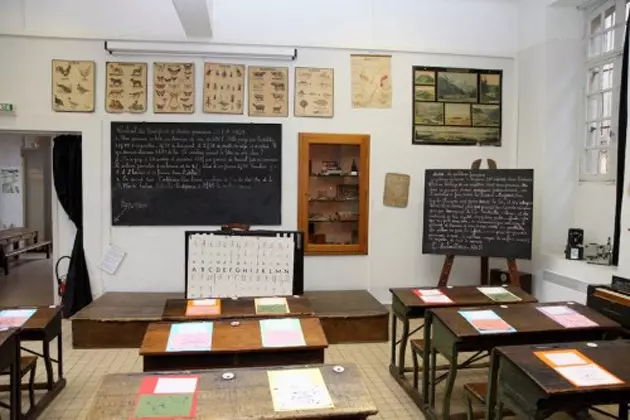
70 years ago, schools looked a lot like this
WHERE TO SLEEP
Hotel de la Cite
Occupying a former bishop's palace, with splendid gardens leading to the ramparts, this hotel likes to brag to the rich and famous who have stayed there. Walt Disney one of them.
Hotel le Donjon
This 37-room hotel is well located for visiting La Cité. Many of its rooms have views over the ramparts or into the moats.
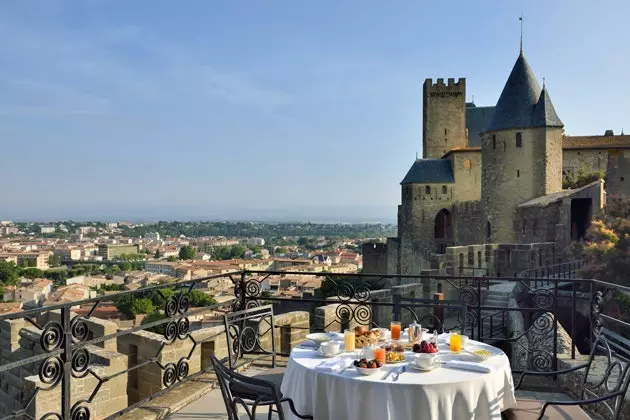
This is a good start to the day
WHERE TO EAT
Domaine d'Auriac
Dinner on the terrace of this hotel with views of its gardens is a delight on summer nights. Its cuisine has a Michelin star and For its foie with mushrooms alone it is worth returning. It has a somewhat cheaper version, the Bistrot d'Auriac where the people of the city usually go.
Count Roger
Another very good restaurant in the medieval city is the Comte Roger. It has many traditional dishes and is one of the best places to eat a good homemade cassoulet.
The Barbacane
Located in the La Cité hotel, this Michelin-starred restaurant Its menu focuses on duck and foie de canard, traditional products.
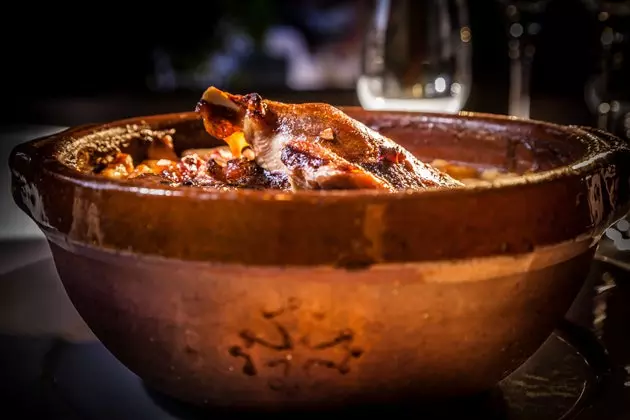
to share without measure
